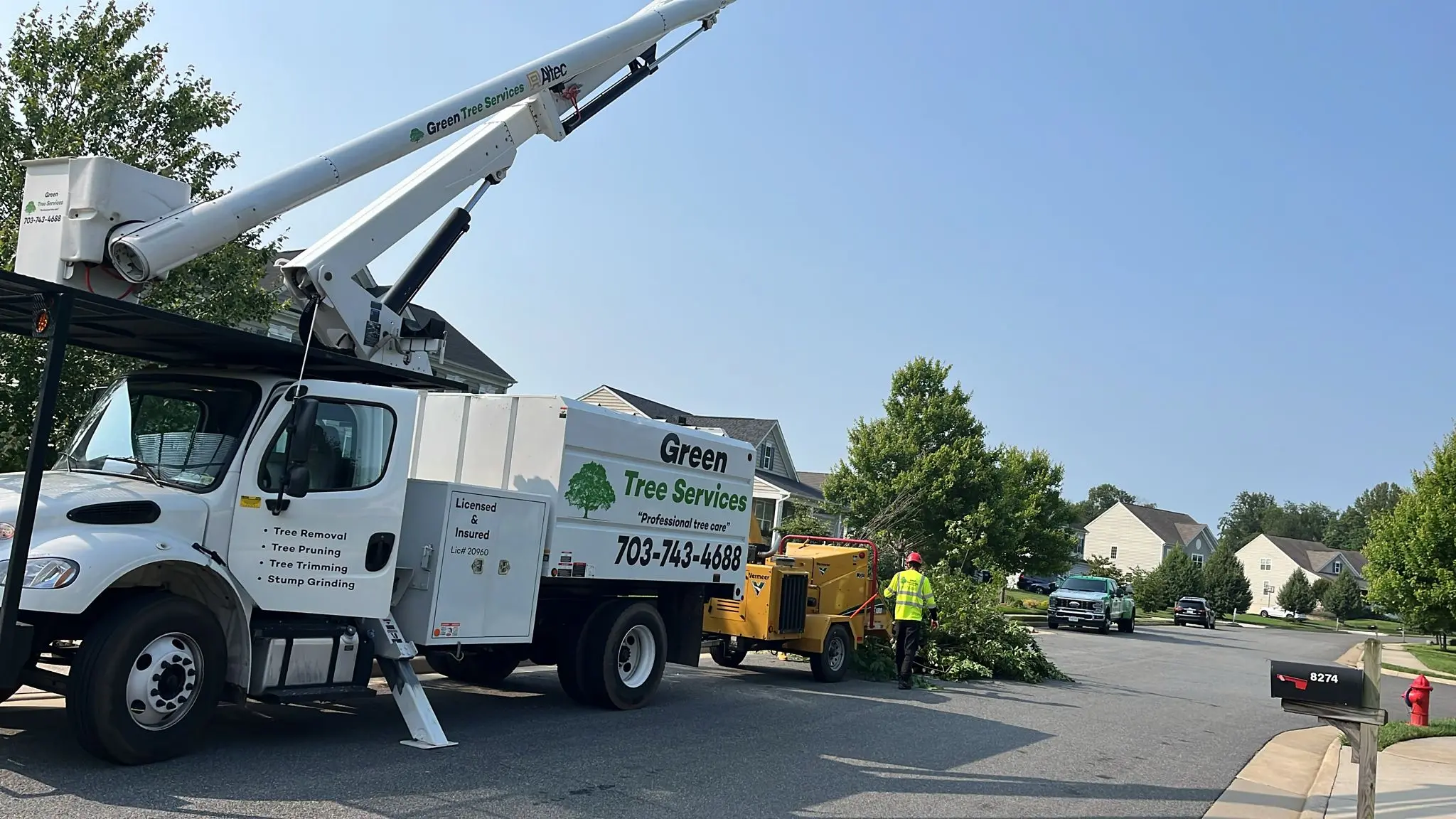You’re about to discover the 14 most critical safety tips for tree removal in our 2025 Safety Guide: “Never Do This When Cutting Down a Tree”.
This article is not about how to cut down a tree, but about what you should know before you can even think about the “how”.
At the end of this article you’ll find links to further resources about the “how”.
But first, let’s make sure you know how to stay safe.
Important Notice & Disclaimer
This guide is for informational purposes only and should not be taken as professional advice.
Green Tree Services does not assume any responsibility for injuries or damages of any kind resulting from people following any of the advice outlined in this article.
Also, this guide doesn’t claim to be complete and probably doesn’t cover every single safety aspect of tree removal.
Please do your own due diligence before attempting any DIY tree project.
And kind of tree removal is a dangerous undertaking, especially without proper training and expertise.
If you’re in doubt at any step of the way, please consult with a professional.

1. If In Doubt, Don’t Do It Yourself
I’m sure you’ve read our disclaimer above, so why do I keep going on about this?
Well…
Unfortunately, there are just too many people who overestimate themselves and their abilities.
When it comes to tree trimming and tree felling there’s a lot that can go wrong.
What to the amateur might occur as the best way to set a cut, might be a fatal mistake in reality.
Especially larger trees you should leave to the professionals, but also small- to mid-sized trees can bring on big challenges.
Of course – if it’s just about cutting wood from a fallen tree into smaller pieces, or uprooting a very small tree, then it’s a different story. But even then there’s things that can go wrong.
In any case, you should always have the right tools and understand the most important techniques, such as how to set a precise horizontal cut or planning a safe path for the felled tree.
If you want to avoid severe injuries, property damage, or worse – then you should never:
use the wrong tools
tools in poor condition
neglect obstructions in the surrounding area
neglect any of our other 13 safety tips (keep reading)
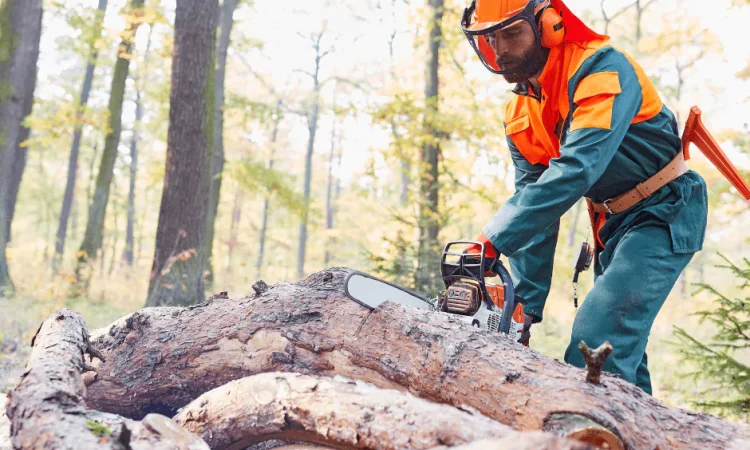
2. Never Cut Down a Tree Without Proper Safety Gear
Ok, so we’ve established that safety should always be our top priority when doing any kind of tree work.
But what does that mean?
It starts with having the right tools and safety equipment.
Here’s a quick overview of the most important gear:
Safety glasses and face screen for eye and face protection
Ear protection to block the noise of chainsaws and pole saws
Sturdy gloves and boots for hand and foot safety
For chainsaw safety: protective pants and jacket or a long-sleeved shirt (protective wear is always preferable)
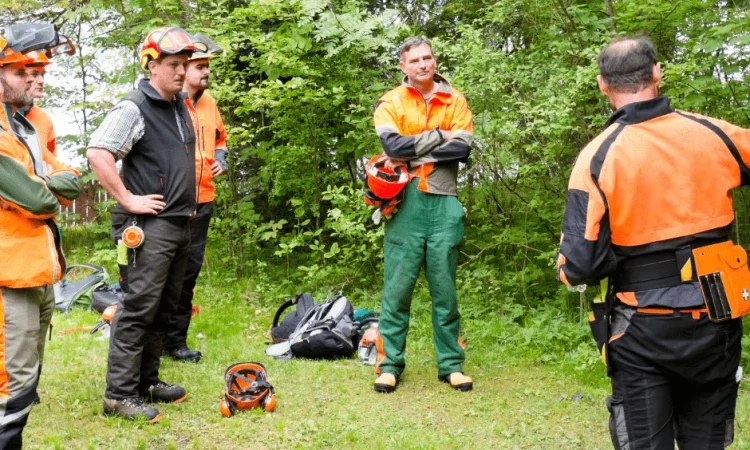
3. Never Operate a Chainsaw Without Training
When cutting down a tree you’ll need a chainsaw, unless you want to saw away for hours with a hand saw.
Watch some YouTube videos and familiarize yourself with how to properly use this powerful tool.
Make sure you have read the owner’s manual and practice operating the saw chain (the cutting part of your chainsaw) and chain brake (a safety mechanism that stops the chain) in a controlled environment.
If you still don’t feel confident – ask a landscaper or tree care professional to instruct you on the proper usage of your chainsaw.
Another good idea might be to go to the store where you’ve purchased it and ask them to show you how to use it properly.
They’ll be happy to help and get you equipped with any safety equipment you might still need.

4. Never Cut Trees in Dangerous Weather Conditions
This is easily overlooked, but always check the weather forecast when you plan a DIY tree project.
High winds, rain, and other unfavorable weather conditions can lead to:
slippery surfaces
falling branches
trees falling in unexpected directions
other circumstances that make the work more difficult and dangerous
Always wait for the right time when the weather is calm and predictable.
If you see any grey clouds in the sky, your best option is to wait for another day.

5. Never Cut Down a Tree Alone
This one is easy:
Never attempt a tree removal project all by yourself.
It can be lifesaving to have another person present, especially in an emergency situation.
This person can help with clearing escape paths, signal danger, and call for professional help if necessary.
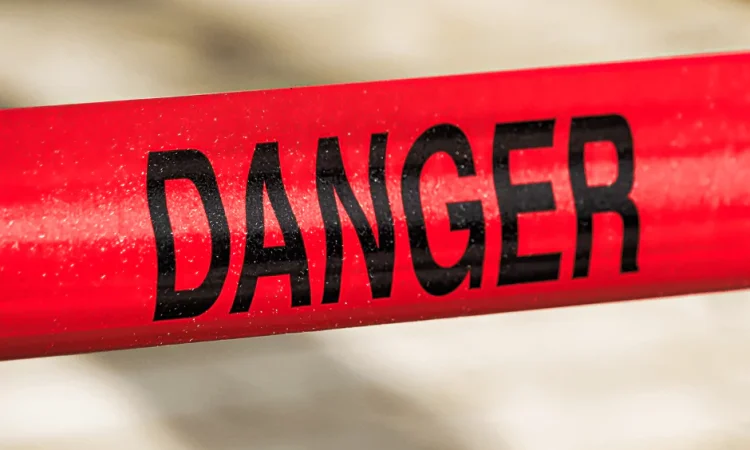
6. Never Stand in the Tree’s Fall Path
Always use proper tree felling techniques and be sure you know exactly what you’re doing – from the first cut to the last.
Double-check if everyone is standing on the right side of the tree, or better yet – outside of the fall zone – when you’re setting the final felling cut.
And of course, never stand directly behind the tree trunk in the direction the tree is supposed to fall.
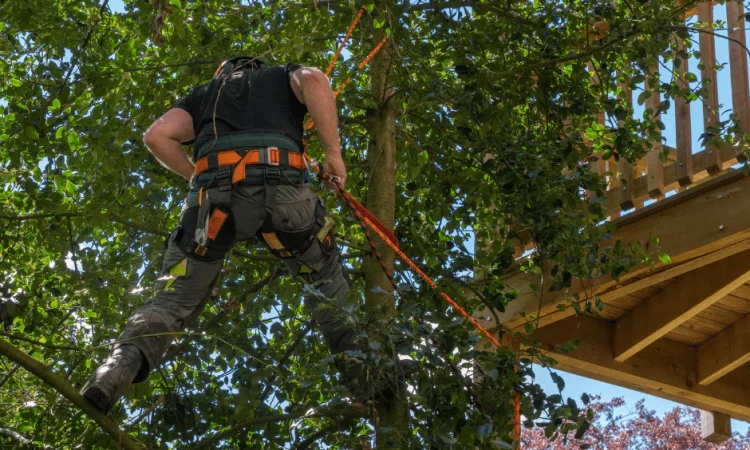
7. Don’t Cut Above Shoulder Height
You shouldn’t cut above shoulder height because it reduces your control over the chainsaw and increases the risk of injuries.
Instead, use a pole saw or get professional help if you’re dealing with large trees that have high branches.
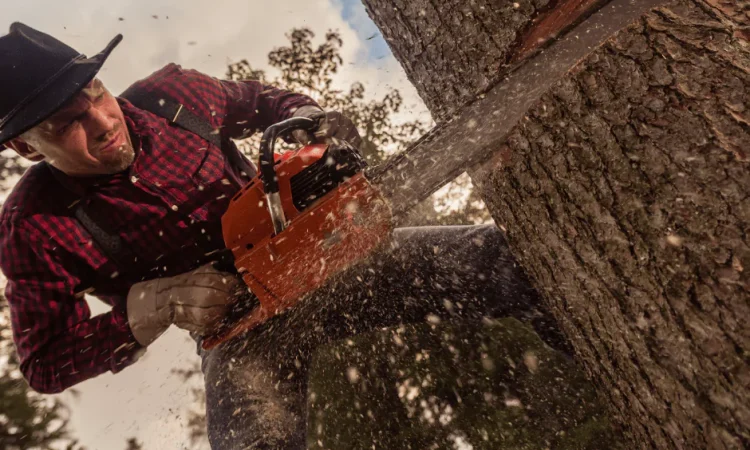
8. Don’t Make Incomplete Cuts
Incomplete cuts can cause the tree’s fall to be unpredictable.
This is the last thing you want.
Follow through with each cut and always make sure the final felling cut is made at the correct angle.
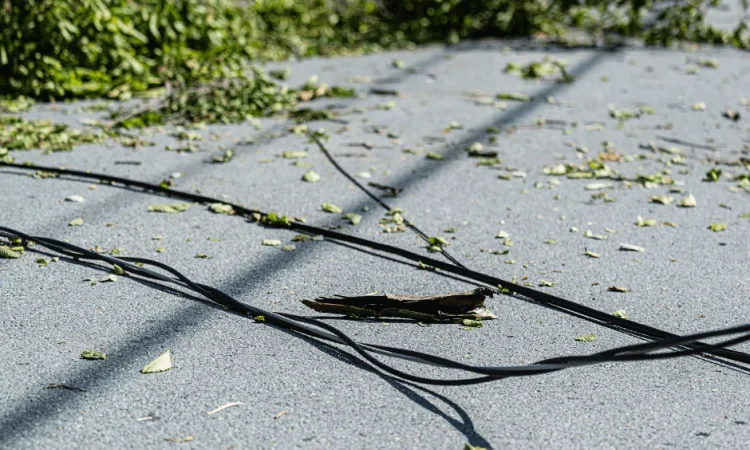
9. Before You Start Cutting Check for Electrical Lines
Apart from power outages, contact with power lines can lead to serious injuries and even fatal electrocution.
Never start the tree cutting process before having checked thoroughly if there are power lines anywhere close to the tree.
Be careful, as they might be hard to spot underneath the lush foliage of some trees.
If the tree is close to electrical wires, it’s best to hire a certified arborist.
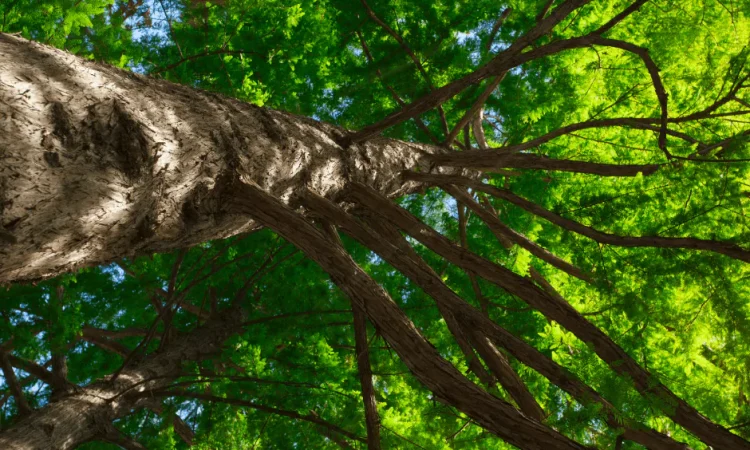
10. Don’t Ignore the Tree’s Lean
Understanding the direction of the tree’s lean is crucial for predicting its fall path.
Ignoring this can make the tree fall in an unexpected direction causing injuries or major damage.
Assess the size of the tree and its natural lean before planning the desired direction of the fall.
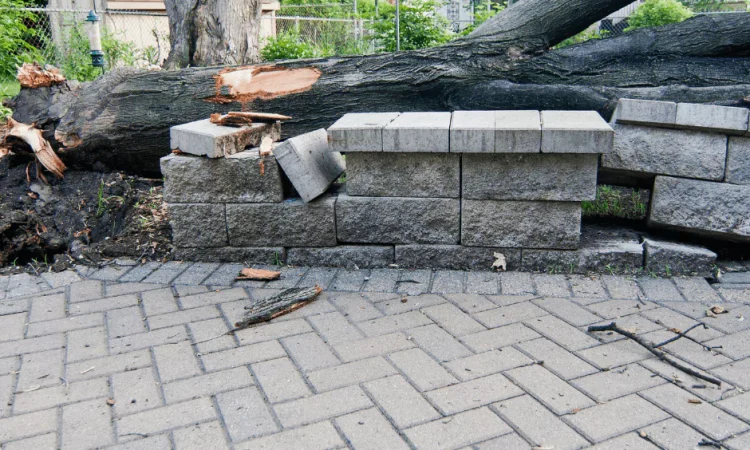
11. Avoid Cutting Near Structures Without a Professional
Cutting trees close to homes, garages, or other surrounding structures without professional help is often a recipe for disaster.
A professional arborist can safely manage the tree removal process in such situations and minimize risks.
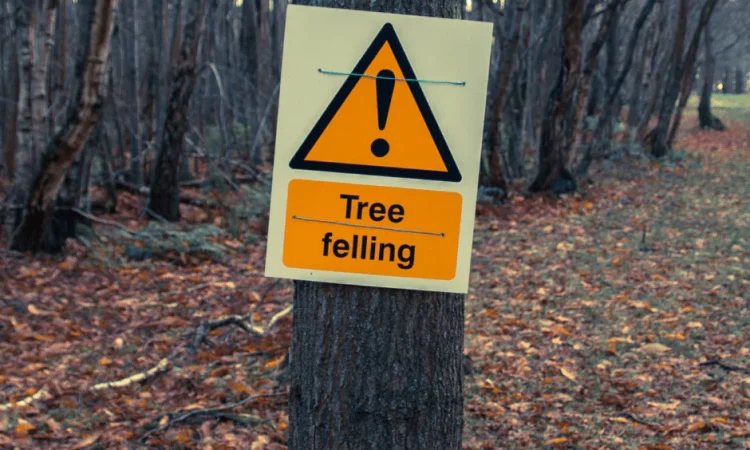
12. Never Turn Your Back on a Falling Tree
Once the tree starts to fall, never turn your back.
Have your escape route prepared and cleared beforehand.
As the tree is falling move quickly to your escape route while keeping your eyes on the tree and its fall zone.
Make sure everybody keeps a safe distance until the tree has fully come down.

13. Never Cut Near Other Trees Without Assessing Risks
If you work on cutting one tree this can impact other nearby trees.
Depending on how close they are standing next to each other, their root systems might be entangled, or other issues might be present that you’re not aware of.
This can lead to dangerous situations.
Therefore it’s generally best to consult with a professional if you’re dealing with multiple trees close to one another.
Tree service and land clearing companies can handle multiple trees easily with heavy machinery.
If you decide to do it yourself, be sure to only proceed after careful consideration and taking all necessary safety precautions.
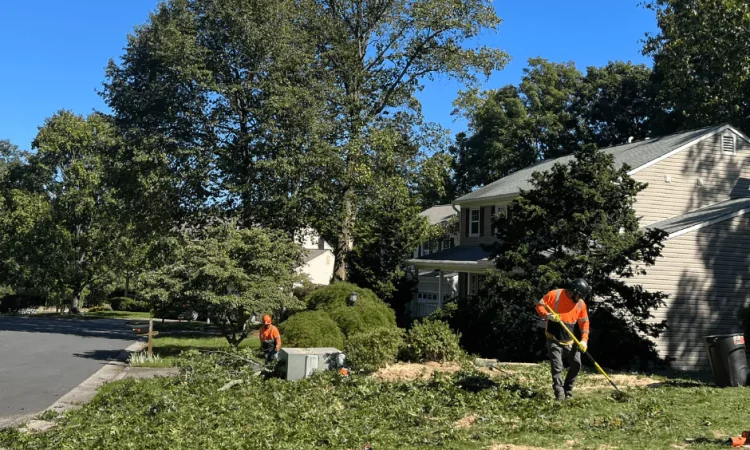
14. Always Clean Up Properly After Cutting
So, you’re done cutting down your tree.
Congratulations!
But what should you do with all the tree branches lying around, the tree stump and all the other debris?
For tree stump removal there are various methods, but the most environmentally friendly and efficient in most cases is stump grinding.
You can rent a stump grinder or hire a professional to get the stump removed.
For the other debris, you have a few options:
- Composting: Smaller branches and leaves can be composted for mulch or garden use.
- Curbside Pickup: Check with your local waste management service to see if they offer yard waste collection.
- Landfill Drop-Off: Many areas have designated locations for yard waste disposal.
- Professional Hauling Services: If there’s a large volume of debris, consider hiring a removal service to handle it.
Take care of all the debris, because leaving a messy site can create hazards for you and others.
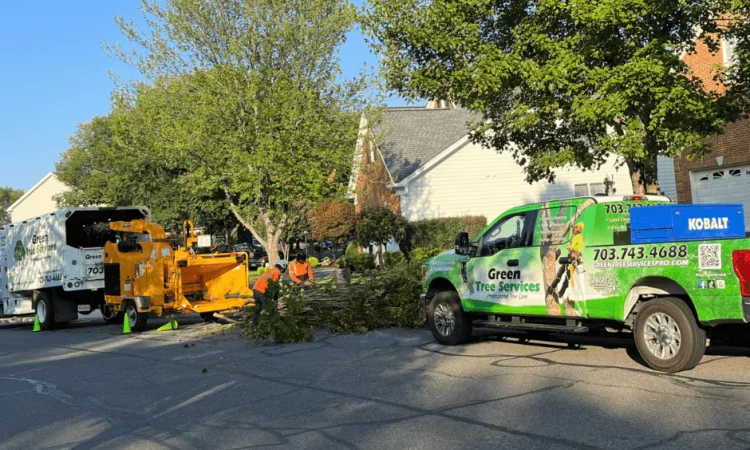
Conclusion and Final Safety Tips
Tree work isn’t easy and requires careful planning, the right tools and equipment, as well as a certain level of knowledge and expertise.
By following these 14 critical safety tips you can avoid some of the most common mistakes when it comes to cutting down a tree.
However, this safety guide is just a starting point.
You should also educate yourself on the different types of tree felling notches and tree felling techniques.
Besides, there is no shame in hiring a professional arborist, even if you’re a seasoned DIYer.
The bottom line is this:
No matter how big or small your tree is, don’t attempt to cut it down yourself if you lack the necessary knowledge, skills or confidence.
If anything, an arborist’s expert advice could save you from making a big mistake by attempting a tree removal project yourself that you’re not ready for.
Remember, safety should always be the top priority in any tree removal project.
So, whatever you do, stay safe and make informed choices.
For professional tree removal services in Northern Virginia you may contact us here.



